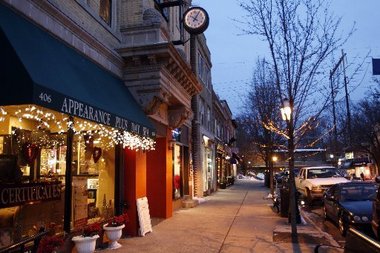Despite the rather obvious link between transportation investments and development patterns, land use planning is simply not a consideration at your average state DOT.

Most state DOTs -- and there are notable exceptions -- see their primary responsibility as building highways, never mind that highways are likely to spur outward development, which leads to the need for more highways. What comes after the highways are built is considered by many to be beyond the state transportation agency's scope.
A decade ago, however, the state of New Jersey -- historically a poster child for sprawl -- achieved a transportation planning breakthrough. Two administrators at the New Jersey Department of Transportation set out to reverse the whole dynamic. They wanted to make transportation projects more holistic, serving communities rather than subordinating all other concerns to the hallowed cause of car capacity. They wanted to infuse transportation planning with a land use strategy that would minimize costs and environmental impacts.
At the time, the Garden State was rapidly approaching the limits of its developable land. And the standard practice of tackling congestion with more roads just seemed to be a fiscal impossibility, says Jack Lettiere, who led NJDOT from 2002 to 2006.
"We spent tens of millions trying to relieve congestion," said Lettiere. "The faster we went, the slower we went. People were getting mad at us. Funds were getting low."
Working with planning director Gary Toth, Lettiere sought to institute a new approach. They created a program within the department called New Jersey Future in Transportation (FIT) and, though later administrations have diluted its impact, the concept remains influential.
At the time, NJDOT was building on a concept, pioneered by the state of Maryland, called "Context Sensitive Solutions."
"Four-lane highways through the center of downtown just don’t revitalize," Lettiere said. "What we did was give our engineers a different problem to solve. Rather than build a highway, we told them, 'Transportation is not an end unto itself. We have to fit it into the culture of the community.'"
That was the goal when they redeveloped Route 57, which runs through New Jersey's rural northwestern corner. The project sought to contain future development within established town centers, while preserving farmland and scenic vistas.
Lettiere and Toth sent transportation planners out to hear community concerns and develop a plan that fit the region's rural nature. A corridor plan was completed in 2006. It set the goal of preserving 7,000 acres of land through smart growth strategies. The plan also included traffic calming measures through some of the small towns along the route. Route 57 was designated as a scenic byway in 2009.
The dairy, pig and Christmas tree farms that characterize this area have been preserved. There is little suburban-style development pressure. In addition, scenic byway status allows road agencies to tap into federal grant money, said Brian Appezzato, a senior transportation planner with Warren County, which is bisected by the road.
Believe it or not, this was a major departure from the standard practice at state DOTs. Even today, many state DOTs approach road projects as challenges in maximizing vehicle throughput.
"Most [transportation] departments will tell you that land use planning is not their purview," said Lettiere. "I think that’s the problem that has to be overcome."
Lettiere and Toth were both pushed out by subsequent administrations (one of the hazards of public service). But Jay Corbalis of New Jersey Future said the state is still a national leader in progressive transportation. Unfortunately, since the time that Lettiere and Toth were at the state DOT, New Jersey has lost some ground in its progress toward sustainability.
"Getting into the land use issue essentially, it’s something that has waned really since they left," Corbalis said. "They were pioneers in a way."
"I think the broader legacy of spending more money on 'fix-it-first,' the philosophy of the department being in the land use business, has declined," Corbalis went on.
Part of the problem with changing the objectives in such a fundamental way is that it requires a long educational process for the department, said Lettiere.
"Initiatives like this really need to be shepherded through the department," he said. "You have to recognize that transportation is more than just building a road or a bridge. It’s a departure from how [transportation engineers] do their business. They haven’t been educated."
New Jersey FIT continues to leave its imprint on the field. During Lettiere's administration, NJDOT and PennDOT developed the Smart Transportation Guidebook, a manual for coordinating land use and transportation decisions. That document continues to help guide transportation policy in a sustainable way in the Keystone State.
Meanwhile, Allen Biehler, former secretary of PennDOT, is working to advance those same principles as part of the Smart State Transportation Initiative, a project of the Rockefeller Foundation and USDOT involving 19 states.
Biehler said he remembers some advice Lettiere imparted.
"He said, 'The real challenge is to get that practice accepted by people in the field.'"
"The highway guys are great about talking about highway thickness and adding five lanes to deal with congestion," Biehler said. "But they’re not so great about talking to communities about land use."
But programs like the Smart State Transportation Initiative are slowly helping that shift take place in more and more places around the country.
"It’s evolving," said Biehler. "We’re trying to make progress and keep things moving forward."





